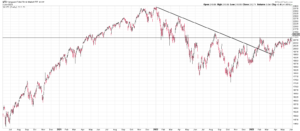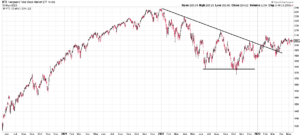MARKET RECAP
After a big June where US stocks advanced by 6.73%, stocks were flat this week, +0.01%, while international markets fell slightly, down by 0.36%. Bond took a big loss of 0.96% on higher interest rates. The yield on the 1-year treasury was up by 24 basis points.
The market no longer anticipates a drop in interest rates this year and is counting on a rate increase at the next meeting in late July. Despite falling just shy of the consensus for nonfarm payrolls, the payroll report that came out this week still reflected a solid labor market, thereby putting to rest the chance for a near-term pause in interest rate increases. Payrolls increased by 209,000; the estimate was 230,000. It was the first miss after a 14-month winning streak. The two prior months were revised down by 110,000. The workweek was up to 34.4 hours from 34.3 in May, and average hourly earnings were up by 0.4%. The unemployment rate fell to 3.6% from 3.7%.
SCOREBOARD










